Maliwaza a renowned Safari Expert, has helped thousands of travelers experience the magic of Tanzania, including the iconic Great Migration in the Serengeti.
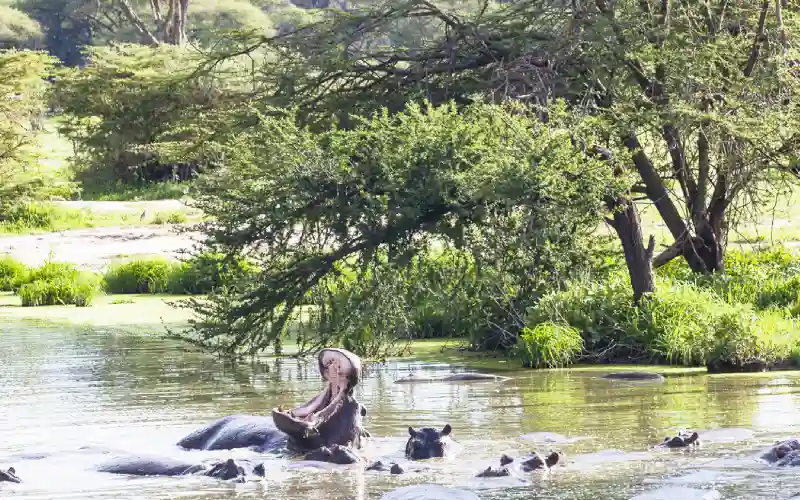
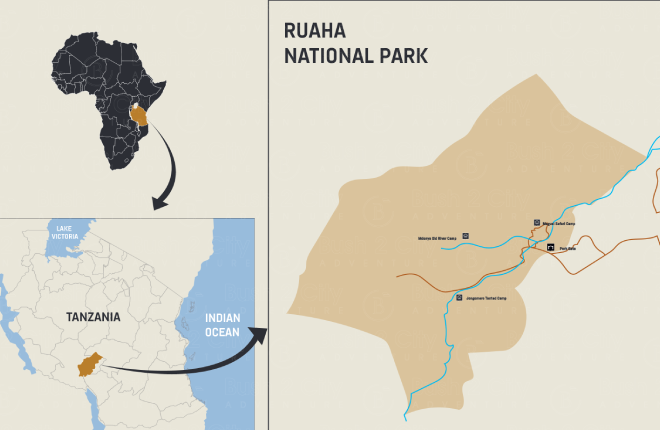
Maliwaza a renowned Safari Expert, has helped thousands of travelers experience the magic of Tanzania, including the iconic Great Migration in the Serengeti.
Ruaha National Park stands as an untouched wilderness renowned for its abundant elephant population. Apart from rhinoceroses, nearly all prominent safari animals are readily observable within its borders. The park is home to expansive prides of lions, occasionally numbering over 20 individuals, which freely traverse the terrain. Even buffaloes, typically considered formidable prey, are not exempt from the park’s predator-prey dynamics.
Ruaha National Park proudly boasts the wild dog as its flagship species. Few destinations offer such excellent opportunities to observe these captivating pack animals, making Ruaha one of the finest. Moreover, the park hosts the largest congregation of greater kudu in East Africa, adding to its allure. Rare antelope species like the lesser kudu, roan, and sable antelope also find refuge within Ruaha’s boundaries, enriching the park’s biodiversity.
From June to October, which marks the middle and end of the Dry season, stands out as the prime period for wildlife observation in Ruaha National Park. During this timeframe, spotting wildlife becomes notably easier due to the sparse vegetation, and animals tend to congregate around the Great Ruaha River and its tributaries. Notably, the male greater kudu is most prominent in June, coinciding with their breeding season. Moreover, wildlife enthusiasts have an enhanced chance of encountering wild dogs during their denning season, which typically spans from June to August.
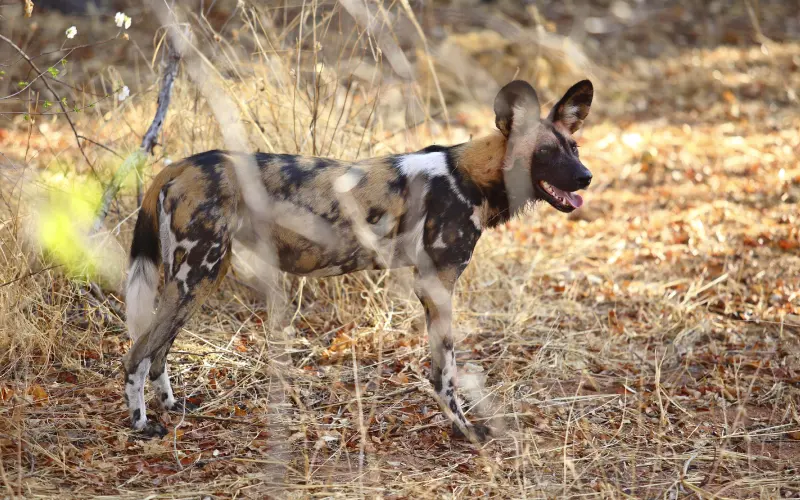
Maliwaza a renowned Safari Expert, has helped thousands of travelers experience the magic of Tanzania, including the iconic Great Migration in the Serengeti.


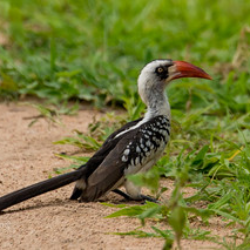


The birdlife in Ruaha offers a rewarding experience throughout the year, but it reaches its pinnacle from November to April when Palearctic and intra-African migrants grace the skies. During this period, resident bird species are actively nesting and flaunt their vibrant breeding plumage. For optimal wildlife viewing, the ideal time to visit the park is from June to October, marking the middle and end of the Dry season.
450+
Nov to Apr
Maliwaza a renowned Safari Expert, has helped thousands of travelers experience the magic of Tanzania, including the iconic Great Migration in the Serengeti.

Maliwaza a renowned Safari Expert, has helped thousands of travelers experience the magic of Tanzania, including the iconic Great Migration in the Serengeti.
During the Dry season in May through September, Ruaha National Park offers clear blue skies and minimal rainfall. As the season progresses, the environment becomes increasingly dry and dusty. Temperatures during this period range from around 26°C/79°F during the day to 14°C/57°F at night.
In October, nearing the end of the Dry season, temperatures rise to an average of 29°C/84°F.
The Wet season in Ruaha National Park, typically from November to April, brings hot and humid conditions. Daytime temperatures hover around 29°C/84°F, while nighttime temperatures drop to about 17°C/63°F.
In November and December, rainfall begins, often in the form of afternoon showers, with temperatures peaking before the rain.
January through March continues with occasional afternoon showers, though unlikely to last all day. April marks the end of the Wet season, with rainfall decreasing, and temperatures averaging around 28°C/82°F during the day and 16°C/61°F at night.

Maliwaza a renowned Safari Expert, has helped thousands of travelers experience the magic of Tanzania, including the iconic Great Migration in the Serengeti.
Safaris to Ruaha National Park often commence from Dar es Salaam, with Julius Nyerere International Airport (DAR) serving as the primary point of entry. Upon arrival, we typically organize airport pickup, transfer to accommodations, and arrange further transportation, whether by air or road, as part of your tour package.
The journey from Dar es Salaam to Ruaha covers approximately 600km/373mi and typically requires at least 10 hours*, traversing dusty and bumpy roads. Many travelers opt to break up the journey with a stopover at Mikumi National Park, located about 320km/200mi from Ruaha, with a travel time of roughly 5 hours*.
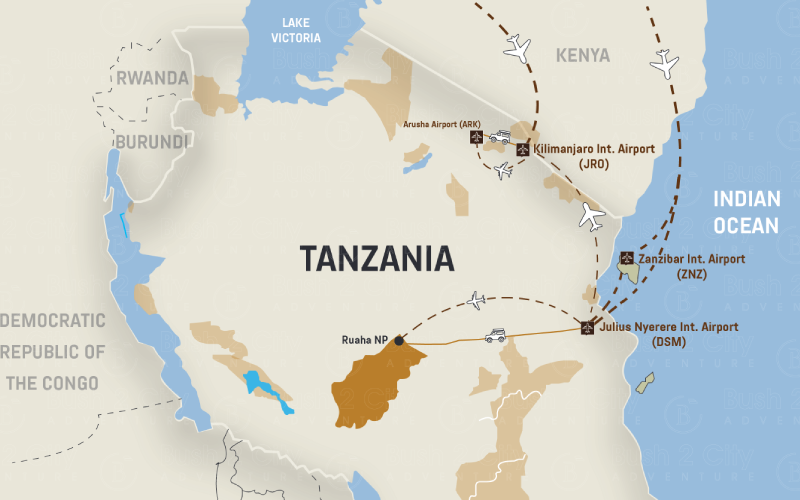
Please note that Bush 2 City Adventure currently does not offer international flight air ticketing services. Guests are kindly advised to arrange and book their own international flights to Tanzania. We recommend checking the official websites of major airlines that frequently serve Kilimanjaro International Airport (JRO) and Julius Nyerere International Airport (DAR) for availability and booking.
To learn more about international travel options to Tanzania from various global destinations, please click here
To reach Ruaha National Park, the most straightforward method involves taking a direct flight from Dar es Salaam. These flights can be either scheduled services or private charters that land at one of the airstrips within the park. Additionally, there is a network of flights linking the various parks in the Southern safari circuit, ensuring smooth travel between each location. For those coming from the North, specifically from Arusha town — a hub for Northern safari adventures — flights are readily available as well. A few of the notable airlines providing these services include:
For detailed information on passport, visa, vaccination, and other prerequisites for entry into Tanzania, we encourage you to consult our FAQ section on the Tanzania page. This resource is designed to equip you with the necessary knowledge to ensure a seamless preparation process for your visit.
Maliwaza a renowned Safari Expert, has helped thousands of travelers experience the magic of Tanzania, including the iconic Great Migration in the Serengeti.
In our assessment, journeying to Ruaha National Park is considered highly secure. The occurrence of crime within the national parks and reserves of Tanzania is notably low. Instances of safety concerns tend to arise more frequently in urban settings, prompting the suggestion for standard safety measures while exploring cities and towns during your travels. For further guidance on urban safety, please refer to the ‘Cities & Urban Areas: Safety Precautions’ section below. Moreover, if your visit is part of an organized tour, rest assured that your guide will prioritize your well-being throughout the safari adventure.
For those planning to visit Ruaha, it’s wise to consider antimalarial medication as a precaution. Additionally, the use of mosquito repellent, especially formulas that contain DEET, is strongly advised to enhance protection. To further guard against mosquito bites, wearing long pants and closed-toe shoes in the evenings is recommended. Before embarking on your journey, it’s important to consult with your healthcare provider or a local travel health clinic to discuss any necessary vaccinations.
Observing wildlife is incredibly safe, provided that you adhere to the park’s regulations and heed your guide’s recommendations. For further safety measures, please refer to the ‘Wildlife Viewing Safety Precautions’ outlined below. These additional guidelines are designed to ensure your experience is both enjoyable and secure.
Maliwaza a renowned Safari Expert, has helped thousands of travelers experience the magic of Tanzania, including the iconic Great Migration in the Serengeti.
Maliwaza a renowned Safari Expert, has helped thousands of travelers experience the magic of Tanzania, including the iconic Great Migration in the Serengeti.


Maliwaza a renowned Safari Expert, has helped thousands of travelers experience the magic of Tanzania, including the iconic Great Migration in the Serengeti.
Ruaha National Park stands as an untouched wilderness renowned for its abundant elephant population. Apart from rhinoceroses, nearly all prominent safari animals are readily observable within its borders. The park is home to expansive prides of lions, occasionally numbering over 20 individuals, which freely traverse the terrain. Even buffaloes, typically considered formidable prey, are not exempt from the park’s predator-prey dynamics.
Ruaha National Park proudly boasts the wild dog as its flagship species. Few destinations offer such excellent opportunities to observe these captivating pack animals, making Ruaha one of the finest. Moreover, the park hosts the largest congregation of greater kudu in East Africa, adding to its allure. Rare antelope species like the lesser kudu, roan, and sable antelope also find refuge within Ruaha’s boundaries, enriching the park’s biodiversity.
From June to October, which marks the middle and end of the Dry season, stands out as the prime period for wildlife observation in Ruaha National Park. During this timeframe, spotting wildlife becomes notably easier due to the sparse vegetation, and animals tend to congregate around the Great Ruaha River and its tributaries. Notably, the male greater kudu is most prominent in June, coinciding with their breeding season. Moreover, wildlife enthusiasts have an enhanced chance of encountering wild dogs during their denning season, which typically spans from June to August.

Maliwaza a renowned Safari Expert, has helped thousands of travelers experience the magic of Tanzania, including the iconic Great Migration in the Serengeti.





The birdlife in Ruaha offers a rewarding experience throughout the year, but it reaches its pinnacle from November to April when Palearctic and intra-African migrants grace the skies. During this period, resident bird species are actively nesting and flaunt their vibrant breeding plumage. For optimal wildlife viewing, the ideal time to visit the park is from June to October, marking the middle and end of the Dry season.
450+
Nov to Apr
Maliwaza a renowned Safari Expert, has helped thousands of travelers experience the magic of Tanzania, including the iconic Great Migration in the Serengeti.

Maliwaza a renowned Safari Expert, has helped thousands of travelers experience the magic of Tanzania, including the iconic Great Migration in the Serengeti.
During the Dry season in May through September, Ruaha National Park offers clear blue skies and minimal rainfall. As the season progresses, the environment becomes increasingly dry and dusty. Temperatures during this period range from around 26°C/79°F during the day to 14°C/57°F at night.
In October, nearing the end of the Dry season, temperatures rise to an average of 29°C/84°F.
The Wet season in Ruaha National Park, typically from November to April, brings hot and humid conditions. Daytime temperatures hover around 29°C/84°F, while nighttime temperatures drop to about 17°C/63°F.
In November and December, rainfall begins, often in the form of afternoon showers, with temperatures peaking before the rain.
January through March continues with occasional afternoon showers, though unlikely to last all day. April marks the end of the Wet season, with rainfall decreasing, and temperatures averaging around 28°C/82°F during the day and 16°C/61°F at night.

Maliwaza a renowned Safari Expert, has helped thousands of travelers experience the magic of Tanzania, including the iconic Great Migration in the Serengeti.
Safaris to Ruaha National Park often commence from Dar es Salaam, with Julius Nyerere International Airport (DAR) serving as the primary point of entry. Upon arrival, we typically organize airport pickup, transfer to accommodations, and arrange further transportation, whether by air or road, as part of your tour package.
The journey from Dar es Salaam to Ruaha covers approximately 600km/373mi and typically requires at least 10 hours*, traversing dusty and bumpy roads. Many travelers opt to break up the journey with a stopover at Mikumi National Park, located about 320km/200mi from Ruaha, with a travel time of roughly 5 hours*.

Please note that Bush 2 City Adventure currently does not offer international flight air ticketing services. Guests are kindly advised to arrange and book their own international flights to Tanzania. We recommend checking the official websites of major airlines that frequently serve Kilimanjaro International Airport (JRO) and Julius Nyerere International Airport (DAR) for availability and booking.
To learn more about international travel options to Tanzania from various global destinations, please click here
To reach Ruaha National Park, the most straightforward method involves taking a direct flight from Dar es Salaam. These flights can be either scheduled services or private charters that land at one of the airstrips within the park. Additionally, there is a network of flights linking the various parks in the Southern safari circuit, ensuring smooth travel between each location. For those coming from the North, specifically from Arusha town — a hub for Northern safari adventures — flights are readily available as well. A few of the notable airlines providing these services include:
For detailed information on passport, visa, vaccination, and other prerequisites for entry into Tanzania, we encourage you to consult our FAQ section on the Tanzania page. This resource is designed to equip you with the necessary knowledge to ensure a seamless preparation process for your visit.
Maliwaza a renowned Safari Expert, has helped thousands of travelers experience the magic of Tanzania, including the iconic Great Migration in the Serengeti.
In our assessment, journeying to Ruaha National Park is considered highly secure. The occurrence of crime within the national parks and reserves of Tanzania is notably low. Instances of safety concerns tend to arise more frequently in urban settings, prompting the suggestion for standard safety measures while exploring cities and towns during your travels. For further guidance on urban safety, please refer to the ‘Cities & Urban Areas: Safety Precautions’ section below. Moreover, if your visit is part of an organized tour, rest assured that your guide will prioritize your well-being throughout the safari adventure.
For those planning to visit Ruaha, it’s wise to consider antimalarial medication as a precaution. Additionally, the use of mosquito repellent, especially formulas that contain DEET, is strongly advised to enhance protection. To further guard against mosquito bites, wearing long pants and closed-toe shoes in the evenings is recommended. Before embarking on your journey, it’s important to consult with your healthcare provider or a local travel health clinic to discuss any necessary vaccinations.
Observing wildlife is incredibly safe, provided that you adhere to the park’s regulations and heed your guide’s recommendations. For further safety measures, please refer to the ‘Wildlife Viewing Safety Precautions’ outlined below. These additional guidelines are designed to ensure your experience is both enjoyable and secure.
Embarking on an African safari promises an adventure of a lifetime, showcasing the continent’s rich wildlife, breathtaking landscapes, and diverse cultures. While safaris are widely considered safe, especially those organized through reputable tour operators, it’s prudent to take certain precautions to ensure a smooth and secure experience. Here are some essential safety tips to consider:
Traveling through Africa offers an enriching experience filled with breathtaking landscapes, diverse cultures, and unparalleled wildlife encounters. While it’s generally safe, especially on organized tours or safaris, navigating urban environments requires a bit of savvy to ensure your trip remains worry-free. Here are some straightforward tips to keep in mind, whether you’re exploring bustling metropolises or serene landscapes:
Exploring the wild through a safari adventure is an exhilarating experience that brings you closer to nature’s most fascinating wildlife. Whether you opt for a guided tour with an experienced professional or decide to navigate the trails on a self-drive journey, safety is paramount to ensure an enjoyable and incident-free adventure. Here are some essential safety guidelines and tips to help you navigate your safari safely:

